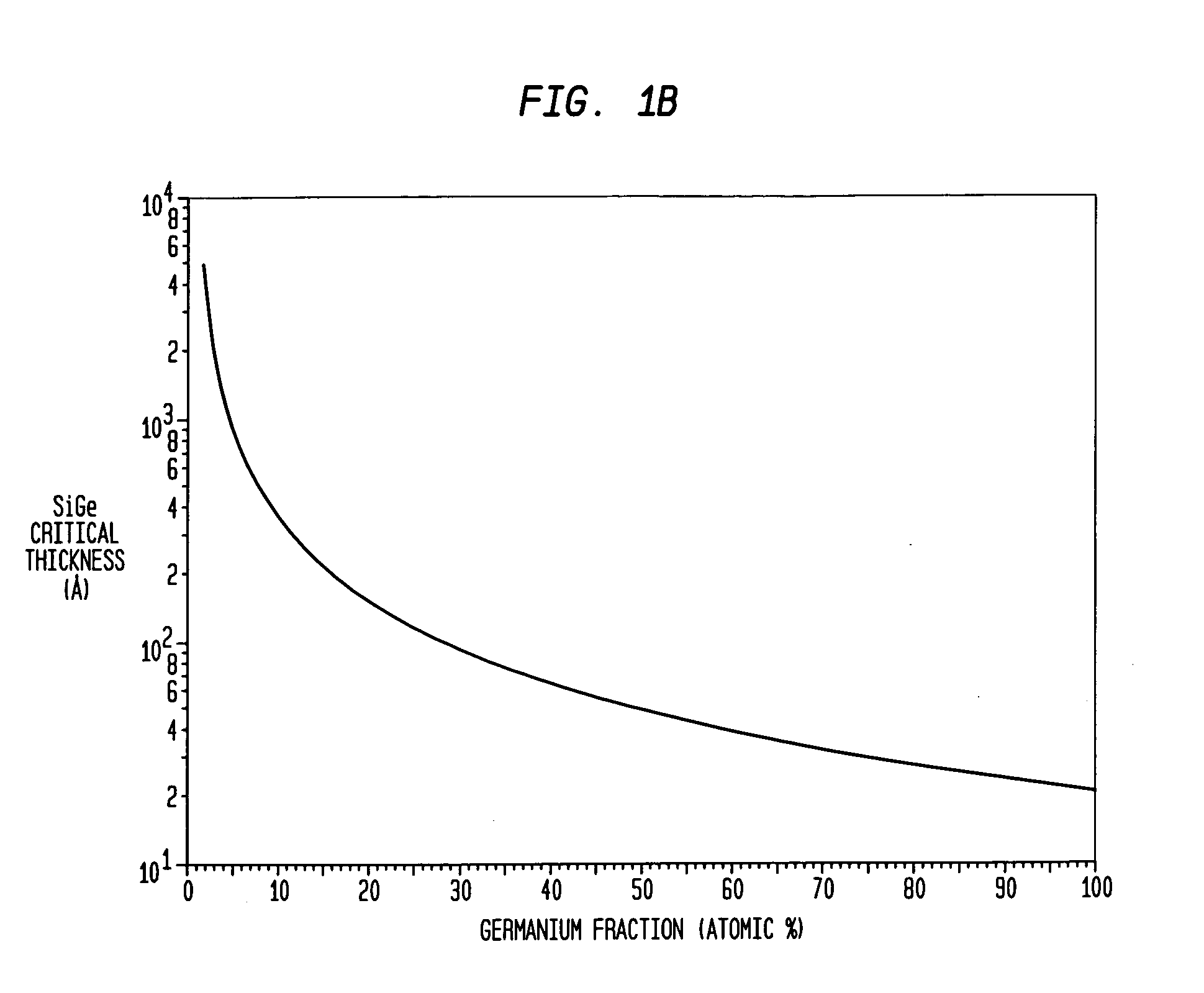Semiconductor devices with reduced active region defects and unique contacting schemes
a technology of active region defects and semiconductor devices, applied in semiconductor devices, radiation controlled devices, electrical apparatus, etc., can solve the problems of low yield and high cost of group iii-v-based processing, low cost of -based processing, poor absorption of si, etc., and achieve the effect of reducing dark curren
- Summary
- Abstract
- Description
- Claims
- Application Information
AI Technical Summary
Benefits of technology
Problems solved by technology
Method used
Image
Examples
Embodiment Construction
Fabrication Process
[0057] Before discussing in detail various device designs that can be realized using novel processes in accordance with one aspect of our invention, we first discuss the process as a general approach to fabricating relatively defect-free semiconductor active regions of devices such as PDs and MOSFETs. However, we concentrate in the exposition on the fabrication of low-defect-density absorption regions of SiGe PDs for operation at IR wavelengths of about 800-1600 nm for the purposes of illustration and as a reflection of one of the principal applications of our invention.
[0058] From our preceding discussion of prior art PDs, it is clear that we desire a device in which optical absorption occurs in high quality Ge, the majority of which is undoped or is depleted.
[0059] Our invention uses an epitaxial lateral overgrowth (ELO) technique to form high quality Ge embedded in an insulator structure that has been formed on top of a Si substrate. ELO has been used to mo...
PUM
 Login to View More
Login to View More Abstract
Description
Claims
Application Information
 Login to View More
Login to View More - R&D
- Intellectual Property
- Life Sciences
- Materials
- Tech Scout
- Unparalleled Data Quality
- Higher Quality Content
- 60% Fewer Hallucinations
Browse by: Latest US Patents, China's latest patents, Technical Efficacy Thesaurus, Application Domain, Technology Topic, Popular Technical Reports.
© 2025 PatSnap. All rights reserved.Legal|Privacy policy|Modern Slavery Act Transparency Statement|Sitemap|About US| Contact US: help@patsnap.com



